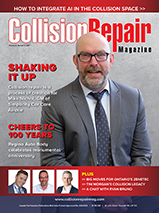BLAST FORWARD
THE FUTURE IS HEATING UP
It is a safe bet that the way your business conducted welds in the first decade of the 20th century has changed in the 2010s. It is also a safe bet that the 2020s will bring even more significant changes to your business’s approach.
The substances used to build modern automobiles are changing at an unprecedented rate. New steels, some patented by OEMs, are finding their way into blueprints, just as quickly as aluminum alloy alternatives. This isn’t going to change any time soon. If Acumen Research and Consulting is to be believed, the producers of automotive aluminum alloys can expect to see their market grow by more than ten percent per year until 2027.
The introduction of new materials such as ultra-high-strength steels, aluminum, and carbon fibre into modern vehicle designs means that welding has become far more complicated than it used to be. It also means that the consequences of welding badly are far more serious. This is a particular problem for repairers working with high-strength steels, some of which lose structural integrity at the molecular level if subject to excessive heating.
There are OEM-approved approaches to performing repairs on vehicles with these complicated materials. These methods include squeeze-type resistance spot welders (STRSW), MIG/MAG Pulse Welders, rivet bonding, and panel bonding.
In some instances, all four methods can be used when repairing. The use of resistance spot welders has been adapted by OEMs due to the introduction of ultrahigh- strength steels.
So, how does a collision facility invest in building the welding infrastructure needed to operate on the vehicles of the 2020s? Well—by remembering the basics—and investing in the tools needed to make it easier for your teams to get the welding process right as quickly and reliably as possible. In this edition, the Collision Repair magazine team has been somewhat brazen in its willingness to highlight welding hardware that isn’t just capable of conducting a certain type of weld, but capable of reducing the risk of misuse as possible. Read through, and prepare to have your heart melted.





















